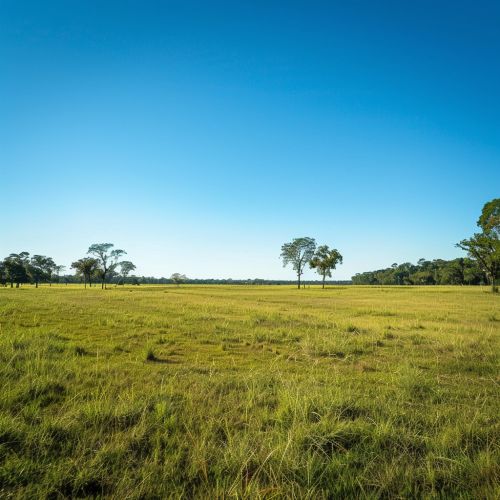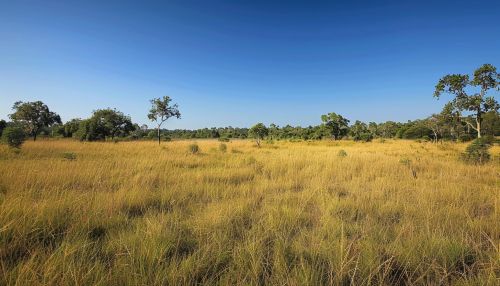Tropical Grasslands
Overview
Tropical grasslands, also known as savannas, are characterized by a mixture of trees and grasses, with trees being less dominant. They are found in a wide band on either side of the equator in the tropical regions of the world, including Africa, Australia, India, and South America. The climate of these regions is typically warm year-round with distinct wet and dry seasons. The soil of tropical grasslands is nutrient-poor and often heavily leached by heavy rains during the wet season.


Climate
The climate of tropical grasslands is influenced by their proximity to the equator, which ensures warm temperatures throughout the year. The average temperature in these regions is usually above 18 degrees Celsius, with little variation throughout the year. The annual rainfall varies from 50 to 130 centimeters, and it is concentrated in the wet season, which lasts for about six to eight months. The dry season is characterized by drought and fires, which play a crucial role in the maintenance of the grassland ecosystem.
Flora and Fauna
The flora of tropical grasslands is dominated by grasses, with trees and shrubs scattered throughout. The grasses are adapted to the frequent fires and droughts, and they grow quickly during the wet season. The trees, such as the acacia and baobab, have adapted to the dry conditions by developing deep root systems and thick, fire-resistant bark.
The fauna of tropical grasslands is diverse and includes many large herbivores, such as elephants, zebras, and wildebeests, which feed on the abundant grasses. Predators, such as lions and cheetahs, also inhabit these regions, as do numerous bird species.
Human Interaction
Humans have interacted with tropical grasslands for thousands of years, using them for grazing livestock, farming, and hunting. However, these activities have often led to overgrazing and soil erosion, threatening the health of these ecosystems. In recent years, efforts have been made to conserve tropical grasslands and to promote sustainable practices.
Conservation
Conservation of tropical grasslands is crucial for maintaining biodiversity and ensuring the survival of many species. This can be achieved through a variety of methods, including the establishment of protected areas, sustainable farming practices, and the control of invasive species. Education and awareness are also key components of conservation efforts.
